MACEDONIA
Macedonia is noted for having a cuisine steeped in a variety of culinary traditions, one that draws on an abundantly fruitful land offering a wide range of raw materials and ingredients. After all, the plains of Thessaloniki and Serres are the second and third-largest, respectively, in the entire country, after that of Larisa.
Different culinary cultures (with influences from neighboring countries) flourish throughout the whole of Macedonia, producing a cuisine that has amassed many diverse elements. It is sometimes rich, as is the case near the plains and wherever else affluent inhabitants resided, and at other times more frugal, where it is linked with the difficult life of the refugees who settled in the area in the early 20th c.
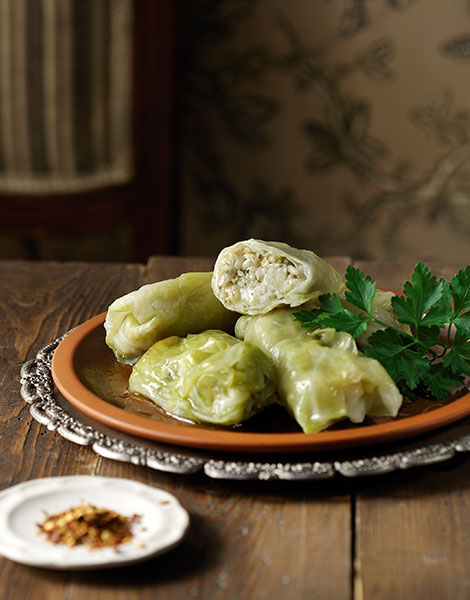
© George Drakopoulos
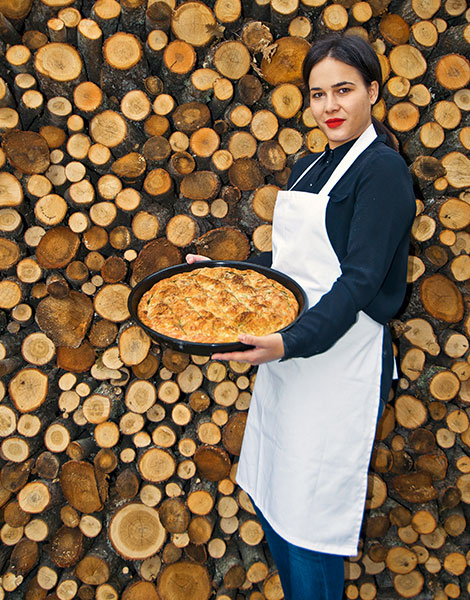
© Clairy Moustafellou
In fact, the food culture has been influenced by all the groups that made their way into the region; Vlachs, Sarakatsani, Bulgarians, Turks, Thracians and, of course, Pontians (Black Sea Greeks) and others from Asia Minor have all made their presence intensely felt in the cuisine here. The last’s famous sousamopita (sesame pie) was called sousamniak, they referred to eggs as occia, which they prepared in dozens of ways – among them poached in water and flour, and pan-fried with spring onions.
The Pontians made Macedonian cuisine more interesting, bringing with them, as part of their culinary culture, Russian dishes such as borscht, and putting new varieties of pies, pastries, pastas and pickled foods on local tables. Leeks, eggplants and red peppers play a prominent role in many Macedonian recipes.
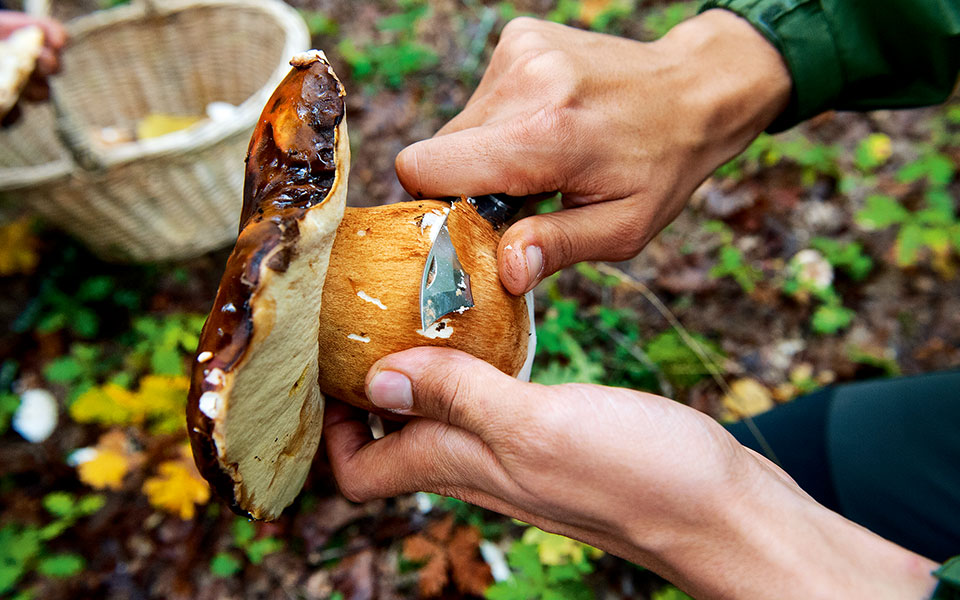
© Alexandros Avramidis
Many of the spices used in the dishes of all these groups demonstrate the strong influence of the Near East. Macedonian cuisine, because of the cold climate of the area, has the reputation of being “heavy,” dominated by pork, winter vegetables such as cabbage, mushrooms, pies and spices. However, the region features a wide range of environments which in turn have shaped culinary habits, and the above comments apply mainly to highland locations such as Florina and Kastoria.
In coastal areas, such as Halkidiki and Kavala, fish and other seafood are to be found in abundance.
THRACE
The multicultural coexistence of people hailing from different backgrounds came to sculpt the cuisine of Thrace as well, in which eastern influences are also apparent. Notable items include cold cuts and pickled foods, as well as spicy kebabs that help inhabitants withstand the cold winds that sweep down from the Rodopi mountains. The towns of Xanthi and Komotini are famous for their syropiasta (syrupy pastries), while in Alexandroupoli, dishes made with seafood supplied by local fishermen are favored.
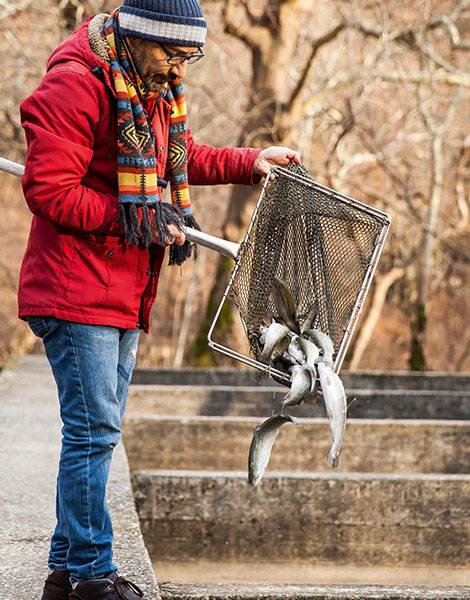
© Dimitris Vlaikos
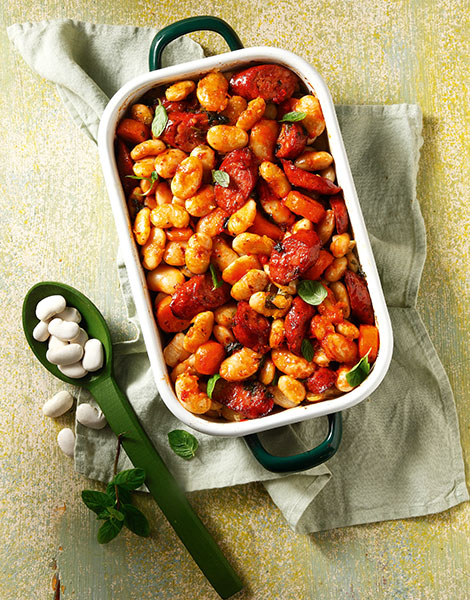
© Food styling: Tina Webb, Photo: George Drakopoulos
Certified products
The red peppers produced in the Florina area are sweet and fragrant. The beans from Prespes – near Florina – enjoy protected designation of origin (PDO) status; they boil easily and are extremely delicious. Many types of wild mushrooms grow in the mountains around Grevena (fungophiles will think they’ve found heaven) and are served in many of the local tavernas.
If traveling to Kozani in October, you’ll get to see vast pale purple fields of Krokos Kozanis (Kozani saffron). You can obtain this valuable spice from the local producers’ cooperative. Serres is famous both for its tasty Carolina rice and for its water buffalo meat. The green olives and the Sithonia honey produced on Halkidiki’s middle peninsula are renowned.
Heading in an eastward direction, the route is filled with gastronomic goodies: Kavala offers fish-farmed mussels as well as fresh fish and other seafood; in Drama, cold cuts are the thing; syrupy pastries are a specialty in Xanthi; and Komotini is famous for its kavourmas (meat slow-cooked with salt and spices in order to preserve it), which can be enjoyed as is or fried with eggs.
Signature Dishes
Macedonia is famous for its pites (savory pies). Wherever you are, you’re sure to come across a bakery selling pies featuring handmade filo pastry. In Kozani, sample the twirled kichi (cheese pie) and, in Serres, the bougatsa (a cream or cheese blend wrapped in very thin filo sheets). They also make tasty kebabs in Xanthi and Komotini.

© Dimitris Vlaikos
Where to eat
Savor super-fresh mussels and seafood – and all this with a sea view – at Panos & Zafira (20 Dimitriou & Karaoli Sq, Kavala, Tel. (+30) 25102.279.78).
For a taste of Macedonian winter cuisine, which includes pies filled with ground meat and leek, smoked pork with peppers and mushrooms, meatballs in a white sauce and various other meat dishes, head to Kontosoros (Xino Nero, Florina, Tel.(+30) 23860.812.56).
Little mezes play the starring role at Kentrikon (5 Stavridi Nikolaou, Serres, Tel. (+30) 23210.227.83), while the Evora Taverna pays homage to Pontian cuisine (Makrynitsa, Serres, Tel. (+30) 23270.233.95).
Enjoy small pan-fried fish, calamari, charcoal-grilled octopus and a selection of tsipouros (pomace brandy) and ouzos, all just a couple of meters from the water’s edge, at the Stelios family taverna (Toroni, Sithonia, Halkidiki, Tel. (+30) 23750.510.72).
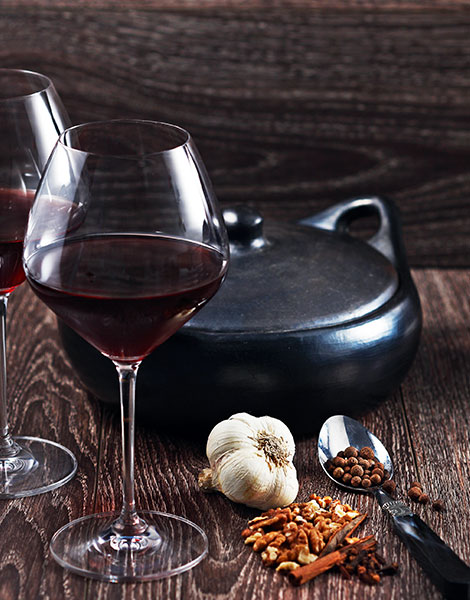
© Perikles Merakos
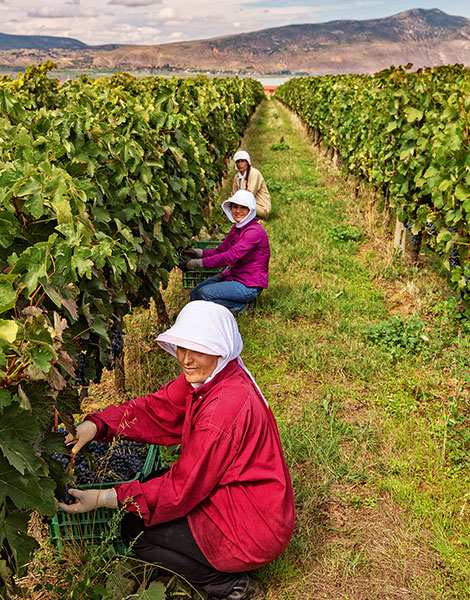
© Perikles Merakos
WINE: XINOMAVRO SHINES BRIGHTEST
By Yiannis Karakakis MW
One of the most reliable areas for the wine industry, northern Greece is home to 15 percent of the area in Greece covered by vineyards. The region’s winemaking history dates back almost four and a half millennia. Thrace and Macedonia enjoy a fine reputation, not just for their well-established industry names, but also for smaller producers who are making significant inroads with top-notch wines fast gaining fans around the world.
Macedonia, stretching from Epirus in the west to Thrace in the east, offers great diversity and the opportunity for numerous indigenous and international varieties to shine in a number of different appellations. However, despite the wide selection of grapes on hand, Macedonia is first and foremost Xinomavro territory. The star of northern Greek vineyards, Xinomavro excels in three different Macedonian appellations. With its cool climate and high elevations, Amyntaio yields a lighter Xinomavro, fresh and elegant, while Naoussa to the east delivers robust, structured wines with great ageing potential.
Lesser-known Goumenissa, northeast of Naoussa, blends Xinomavro with the local Negoska for a softer and riper result. In time, Siatista may emerge as another great Xinomavro terroir; it’s already crafting some gorgeous examples of the grape. Meanwhile, Plagies Melitona in Sithonia in Halkidiki is the only Greek PDO region where Cabernet Sauvignon is still the dominant variety; it is also used in blends with Greece’s oldest surviving variety, Limnio. It was here in Halkidiki that Malagousia, now the fastest-growing Greek variety, was first planted commercially on its journey to success and fame.
Nowadays, first-rate wines are made from this grape by producers such as Gerovassiliou, Porto Carras, Alpha Estate, Costa Lazaridi, Ampeloeis and Wine Art. In eastern Macedonia, Drama and Kavala are other regions worth exploring. The former was responsible for a Greek wine revolution in the 1990s after major investments resulted in benchmark wines such as Amethystos and Magiko Vouno.
In Kavala and the Pangeon terroir, similar wines are made with excellent results. Both Kavala and Drama have had success with international grapes such as Sauvignon Blanc, Chardonnay, Semillon, Cabernet Sauvignon, Merlot and Syrah. However, there’s a growing trend of focusing on indigenous varieties, with some stunning examples of Assyrtiko, Malagousia and Agiorgitiko wines from producers such as Biblia Chora, Pavlidis, Lazaridi and Wine Art.
Moving eastwards, Thrace has no shortage of wine history, with references in Homer to the land of the Kikones, a people of Thrace, and the wine made there by Maron, one of the priests of Apollo in Ismarus. Today, Thrace is a vibrant winemaking region. While Tsantali is the largest producer, the emergence of a number of artisanal wineries such as Kikones, Vourvoukeli and Anatolikos Vineyards has promoted a new sense of excitement among wine enthusiasts regarding this part of the country.











